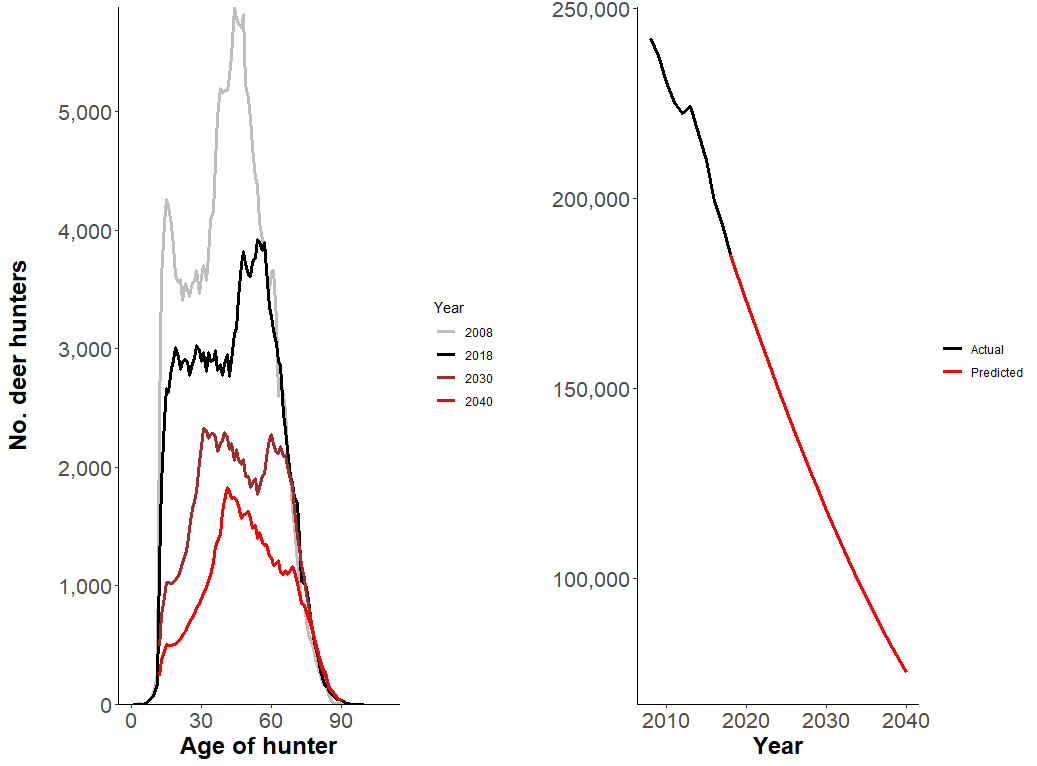When it comes to the future of deer management, the Magic 8-Ball has all the answers. “Reply hazy, try again.”
A new book was published this month, Harvest of Fish and Wildlife: New Paradigms for Sustainable Management, and myself and two colleagues from Pennsylvania and Virginia contributed a chapter about some options for deer managers given our predictions about the future.
Because this book is about the harvest of wildlife, we focused on the primary tool that is used currently to manage white-tailed deer: the number of hunters. Armed with a Magic 8-Ball in hand, the wisdom of Yogi Berra (“It’s tough making predictions, especially about the future”), and a plethora of data, we see many changes ahead for deer hunting.
First, the national picture. Between 1991 and 2016, hunters remained >90% male and 97% white. In contrast, the U.S. population is 48% male and the non-white percentage of the population increased from 15% to 22%.
Fewer than 25% of hunters lived in a large metropolitan area (>1 million people) during 1991-2016, but in the general population the percentage increased from 43% to 57%.
What is changing even more is the number of hunters. Nationally, the number of big game hunters declined 20% between 2011 and 2016!
The changes in Pennsylvania and Virginia are similar, but we had more data to finely slice and dice and dissect. Both states have information on the number of hunters by age. We used data from 2008-2018 to look at the change in number of hunters, by age, each year. Assuming these trends remained the same, we projected hunter numbers out 10 and 20 years.
For Pennsylvania, the graph on the left shows the age structure of hunters. In 2009, the largest age group was about 60 years old (light gray line). However, by 2017, the largest age group was older and fewer in number (black line). Because hunting participation declines drastically after age 65, in 20 years the largest age group will be in their mid-40s and the total number of hunters will decline by nearly 50%. See the downhill ski slope in the graph on the right.

The picture is nearly identical for Virginia, the only difference is that they started with nearly a quarter of the number of hunters that we have in Pennsylvania.

The loss of hunters from the Baby Boom generation will have a huge impact on the future of hunting. But so will the lack of recruitment of youth to hunting. During 2008-2018 the number of youth hunters in Virginia declined 7% per year.
We surveyed 41 states and provinces that hunt white-tailed deer. Thirty-one reported 10-year declines in number of hunters of 1%–34%, two reported no change, and six reported increases of 2%–11% (DE, ME, OK, TX, Nova Scotia, and Ontario).
Of course, there are ongoing attempts to recruit new hunters. We calculated Virginia would have to increase the number of youth by 6% every year, retain current hunters, and reactivate hunters who stopped buying a license by 2%. And what would all that effort do? Keep deer hunter numbers constant. Let’s ask the Magic 8-Ball what its prediction is of this occurring: “Outlook not so good.”
Pennsylvania is careening to where Virginia was 20 years ago, in terms of hunter numbers. Every year Pennsylvania hunters harvest upwards of 300,000 deer just to keep the population stable. How can we adjust to this loss and still manage deer? Virginia is the window to our future. So what are they seeing?
As the Magic-8 Ball says, “Better not tell you now.” Maybe next week.
-Duane Diefenbach
Features image: Image by Wilson Blanco from Pixabay
